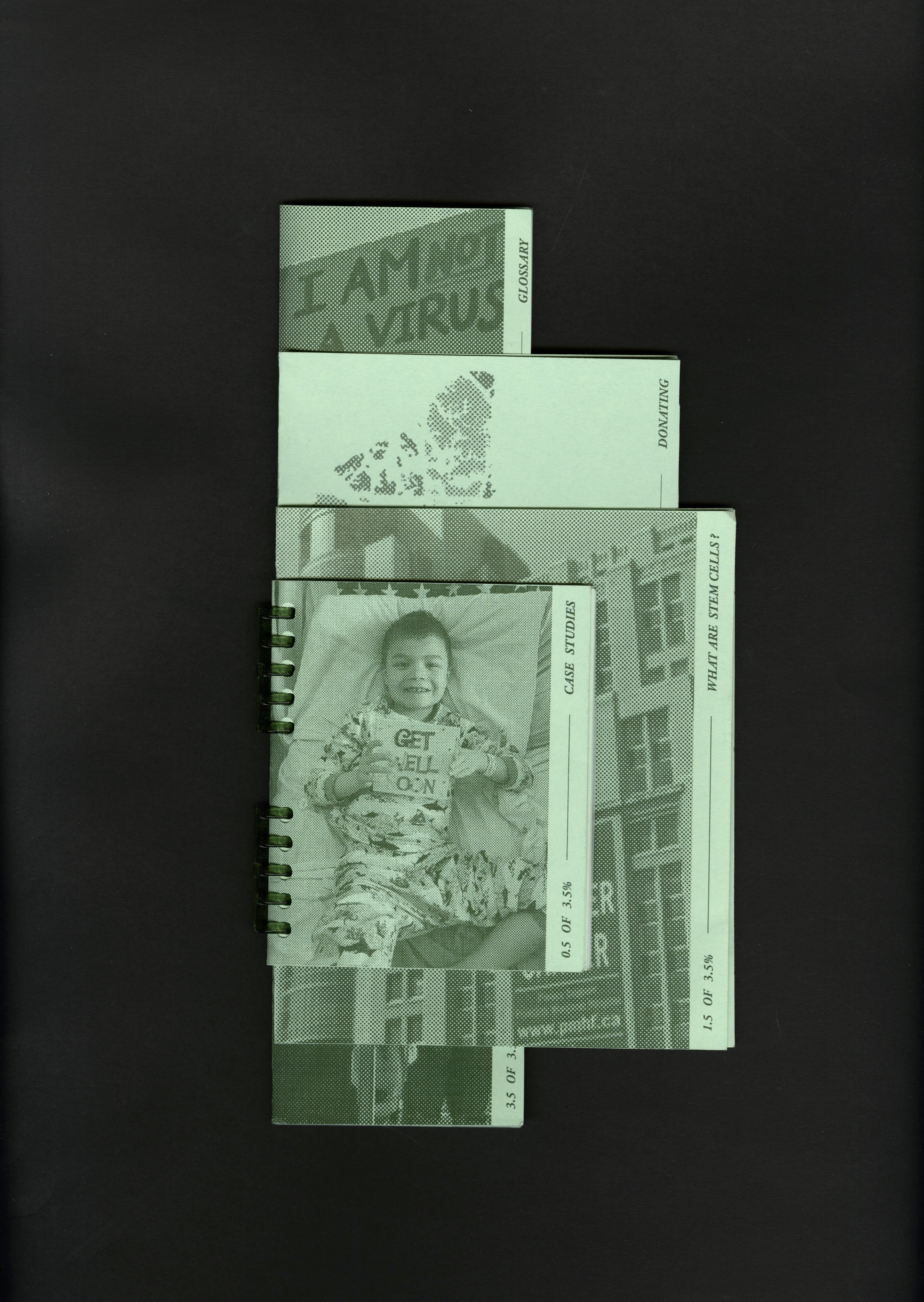
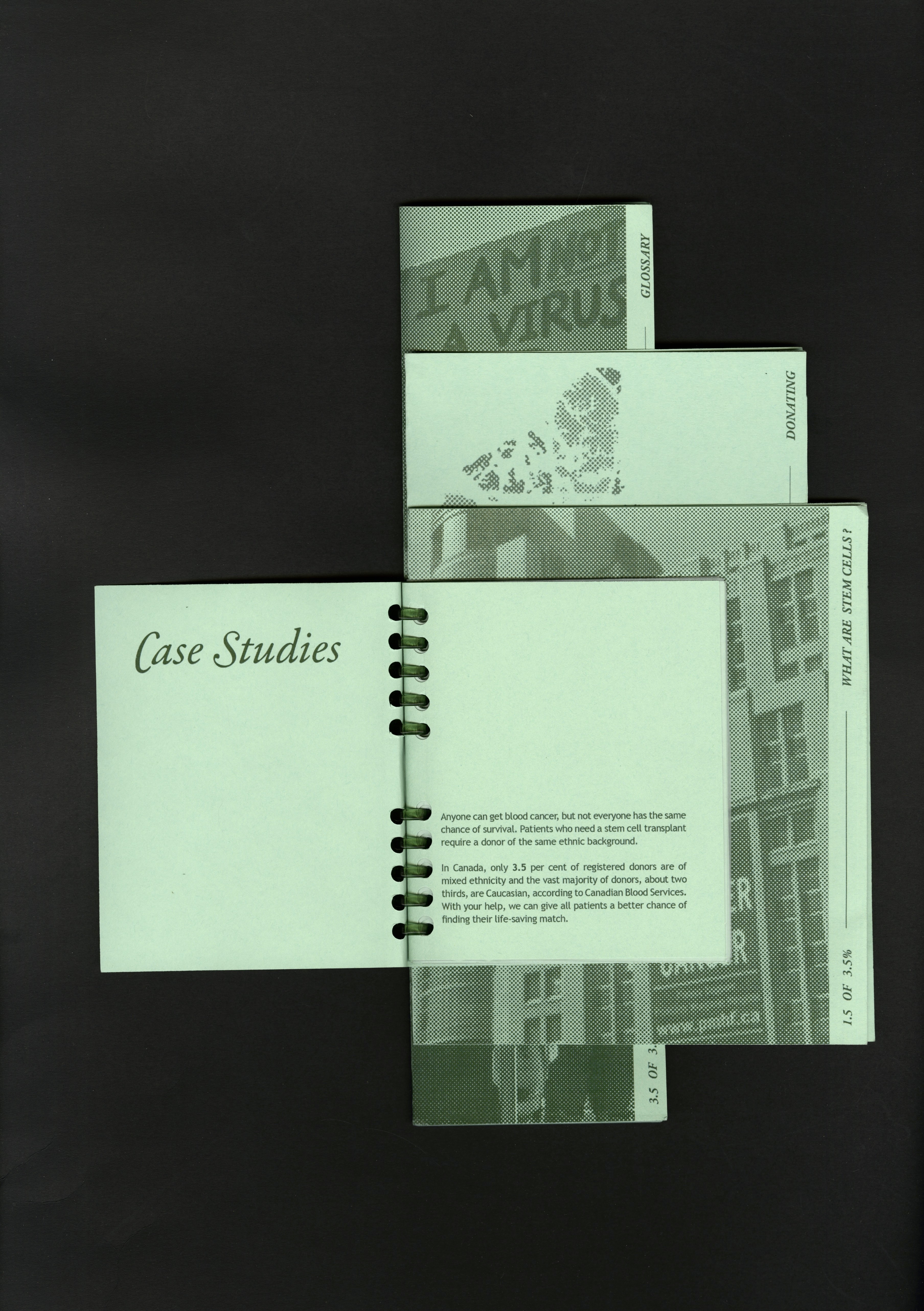


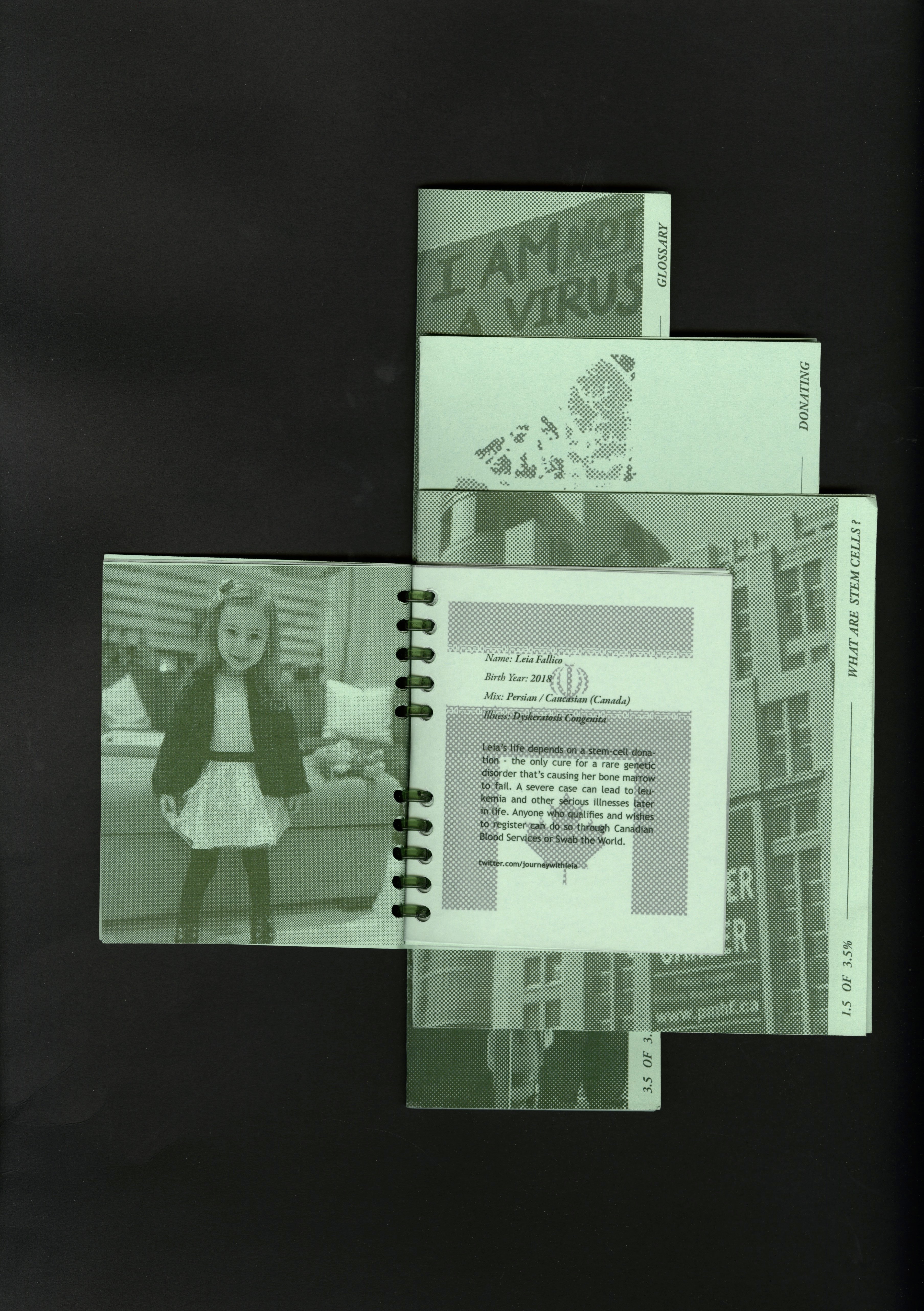

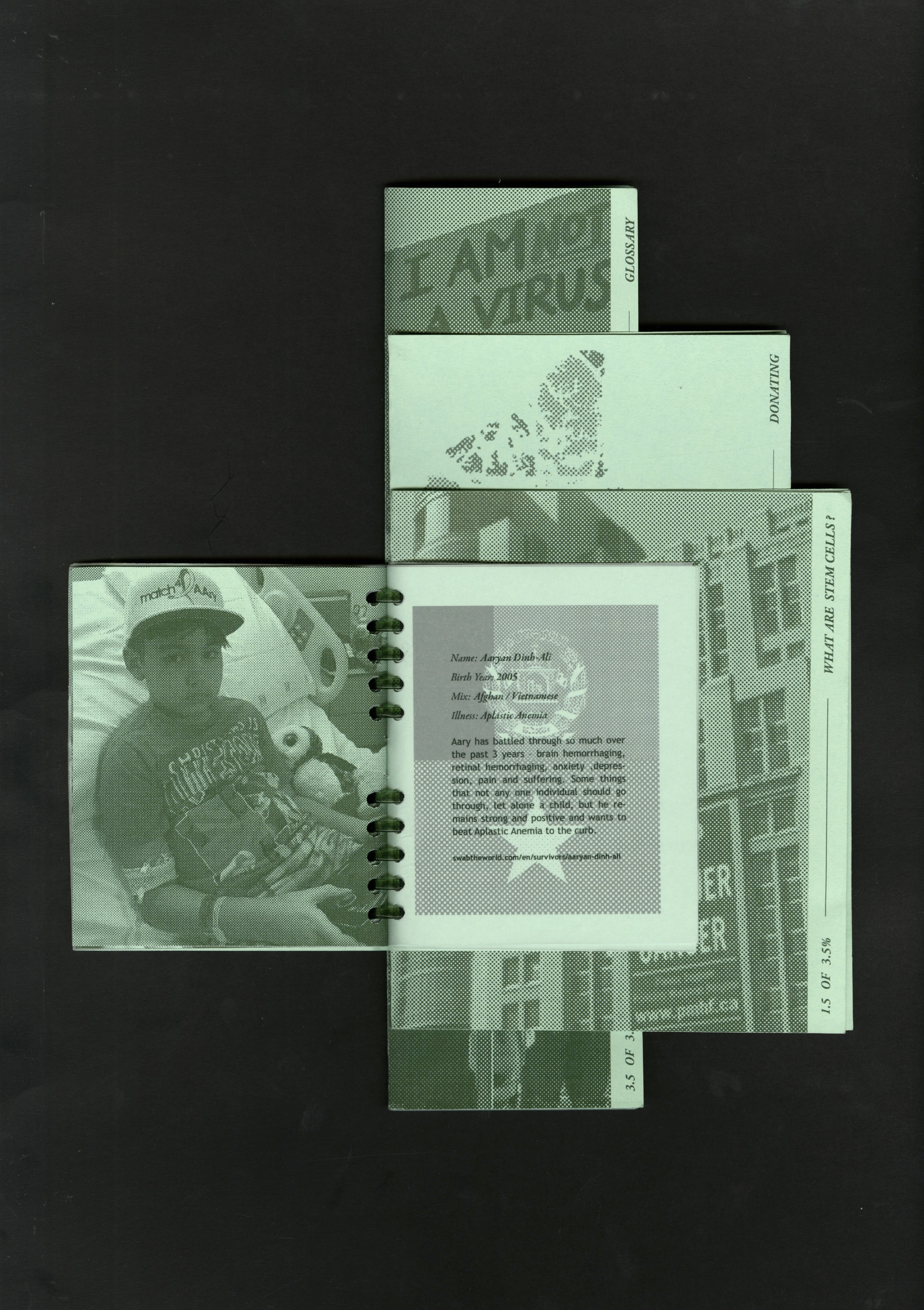
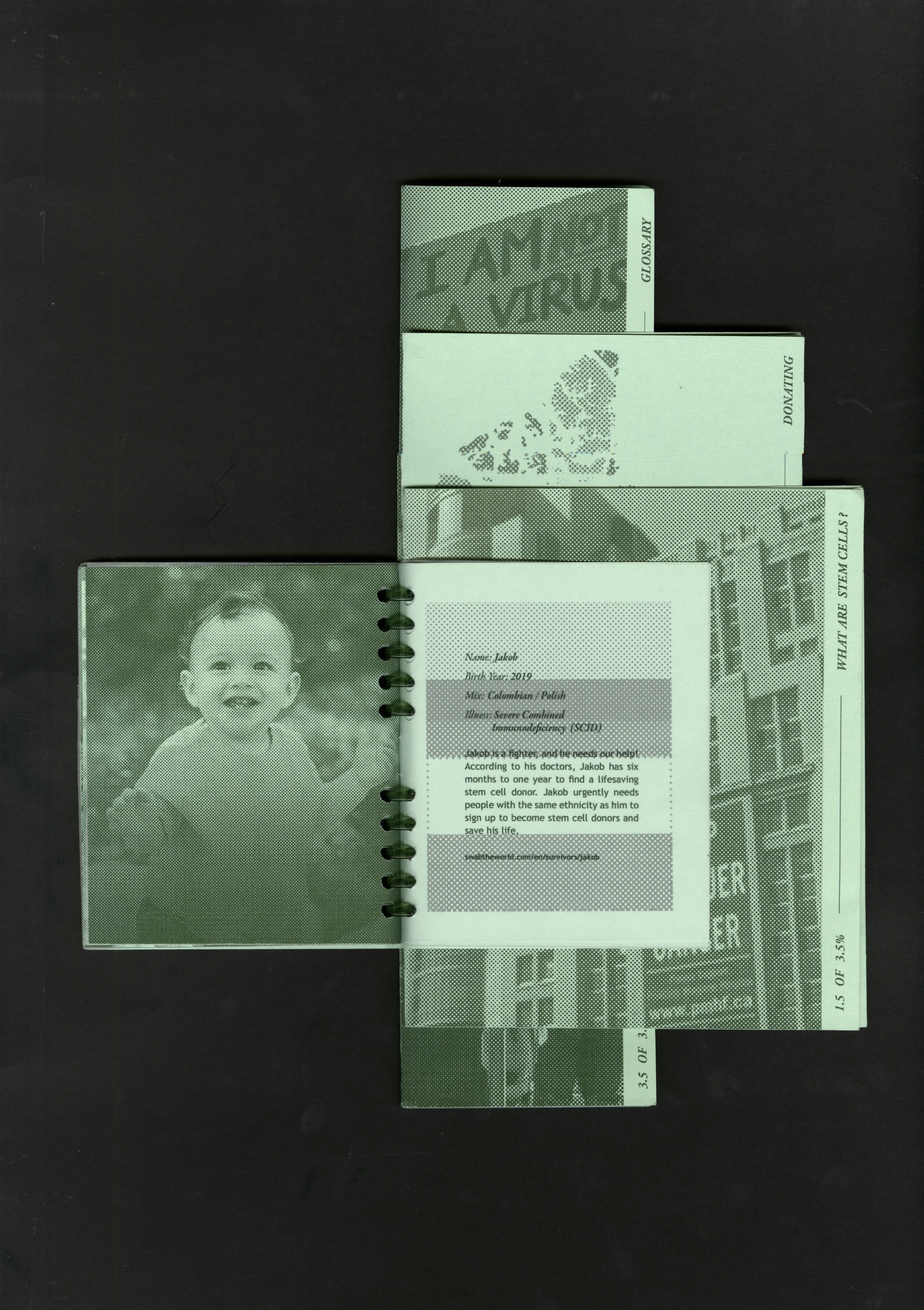
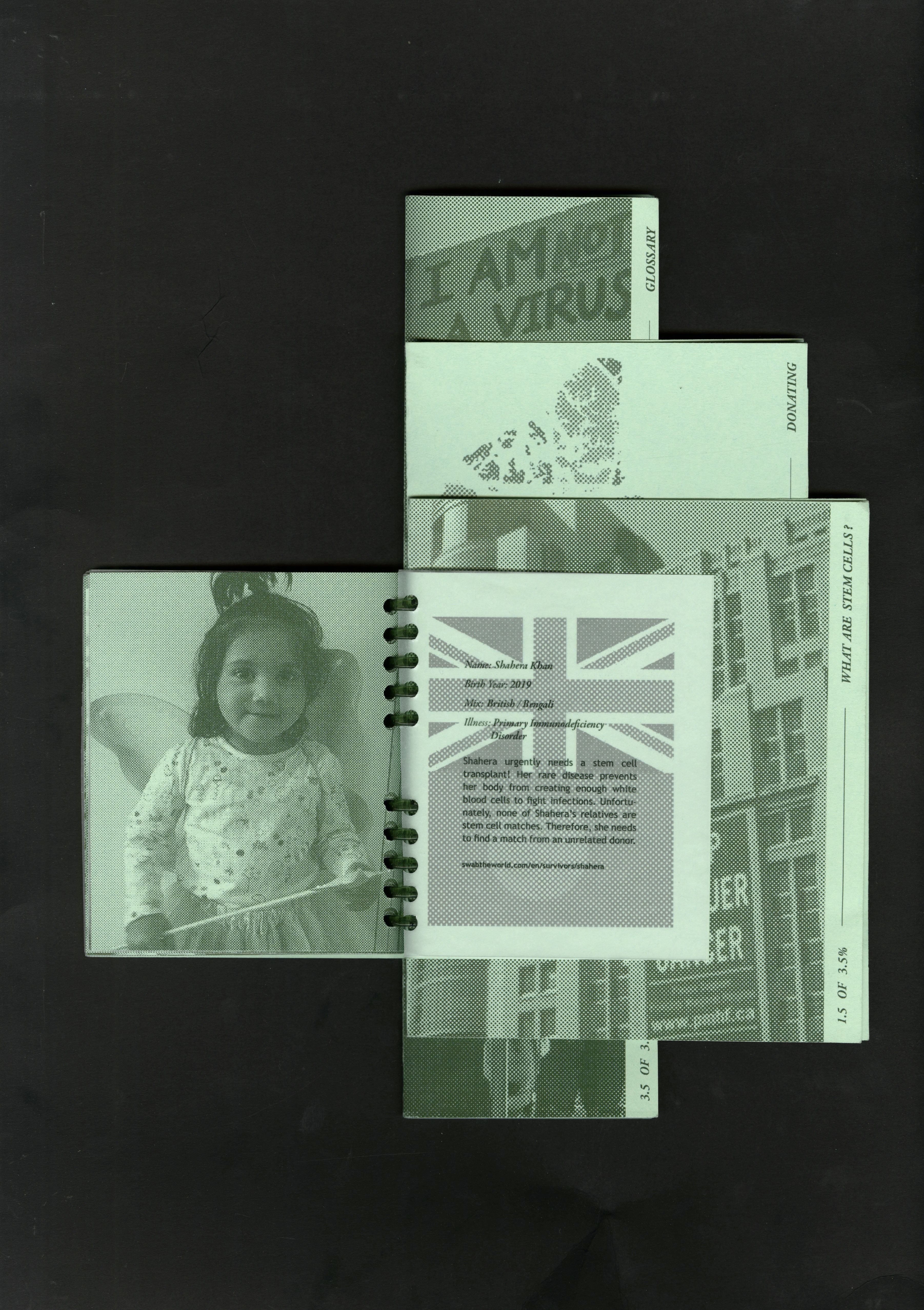
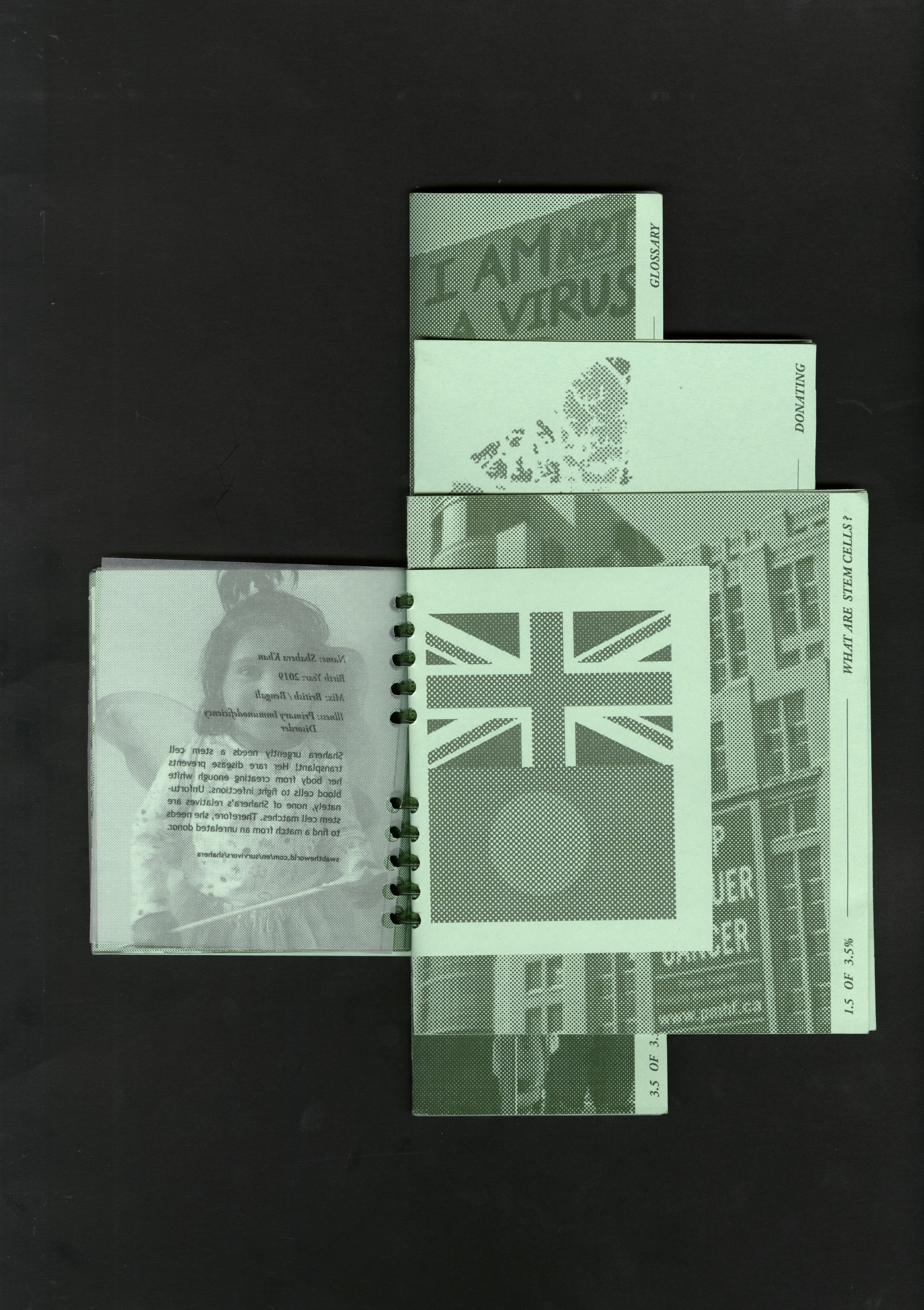
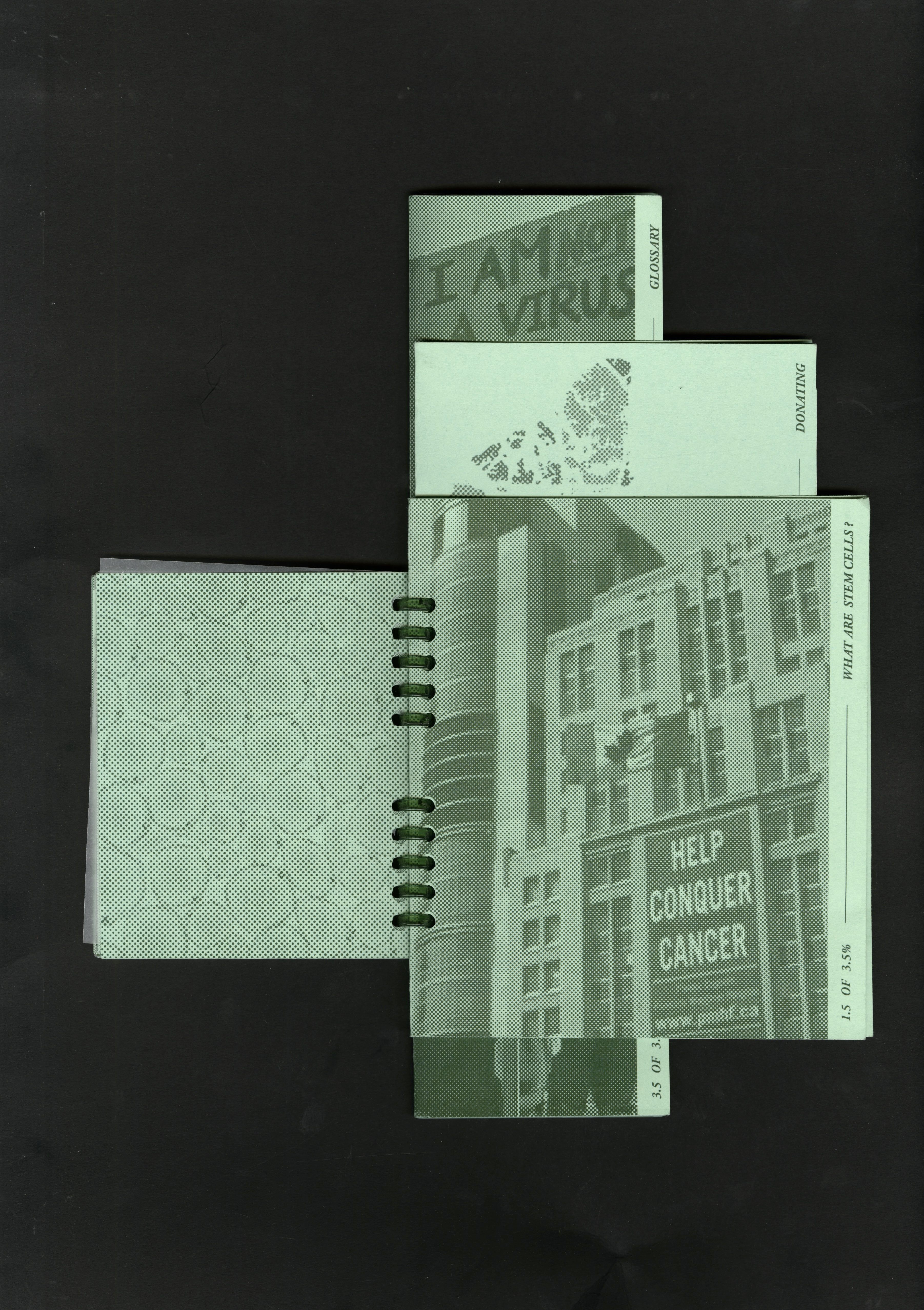
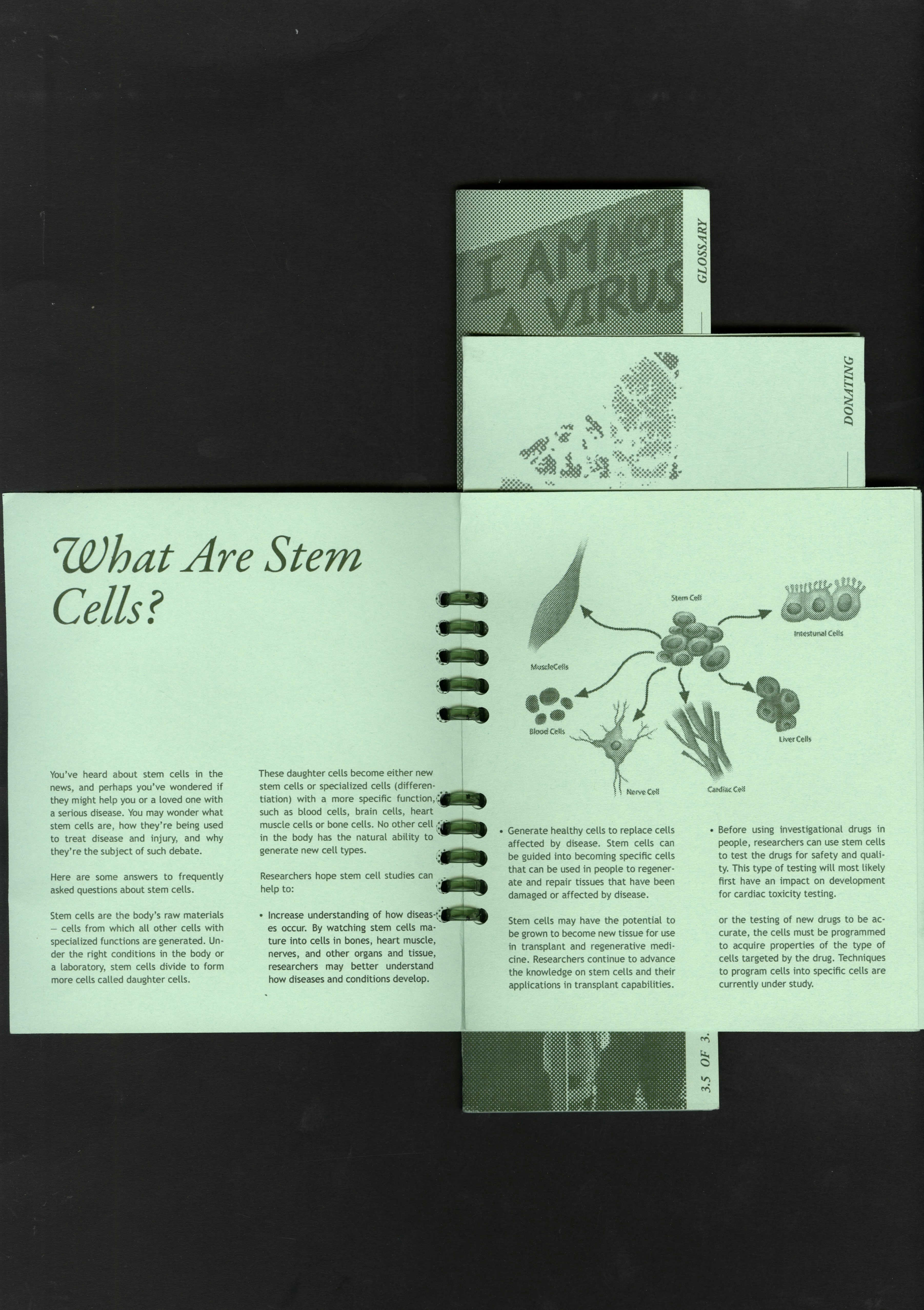
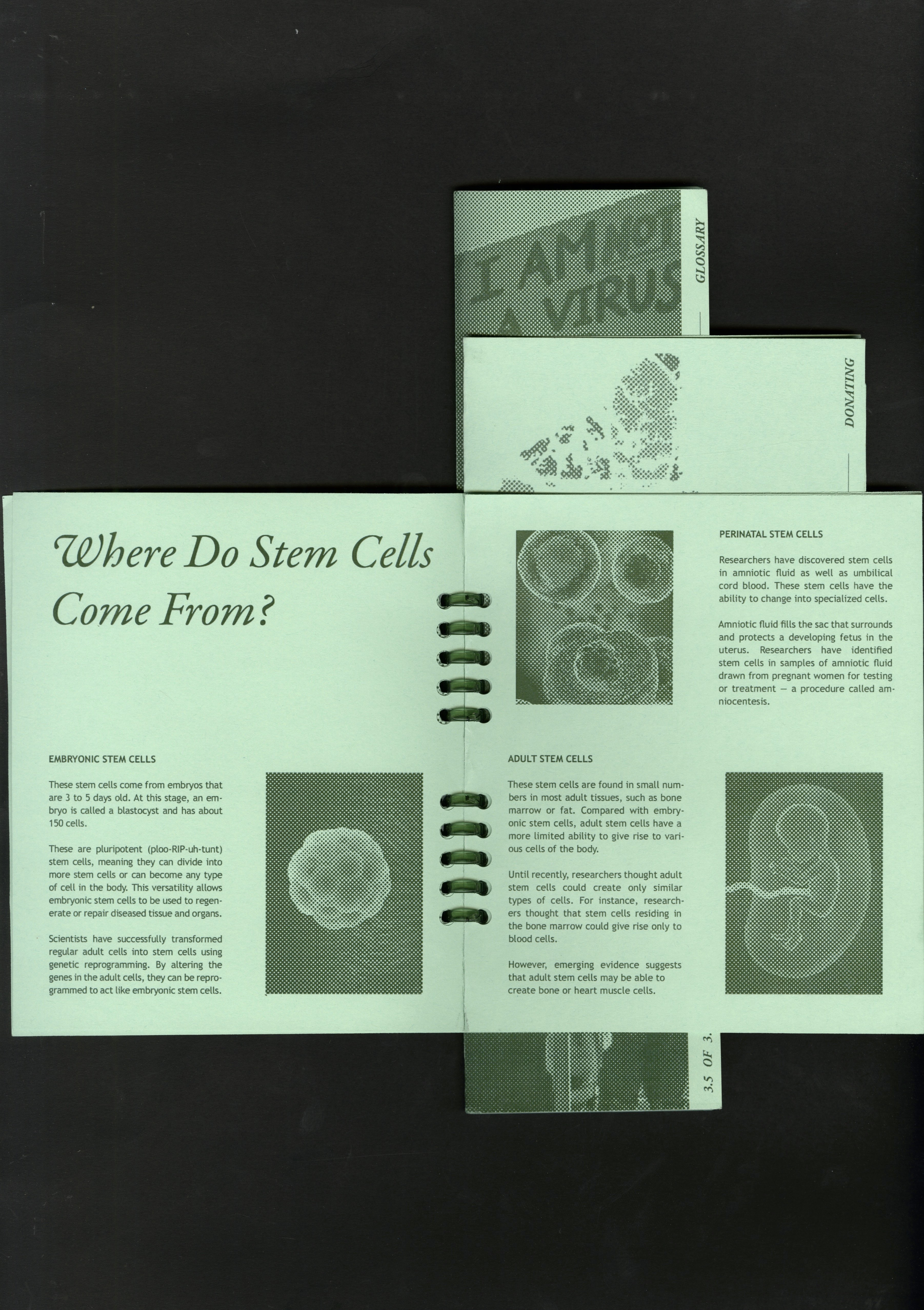
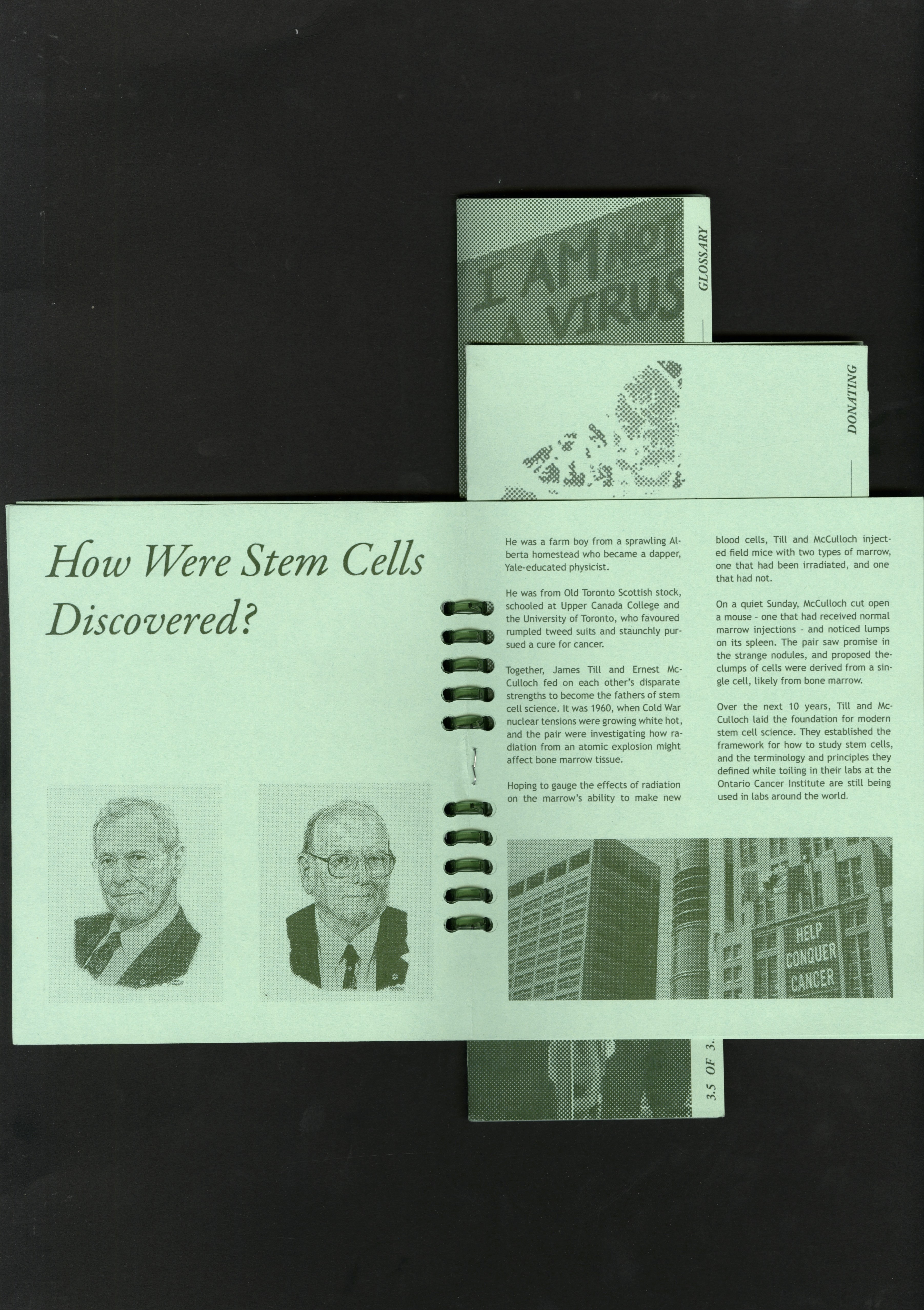
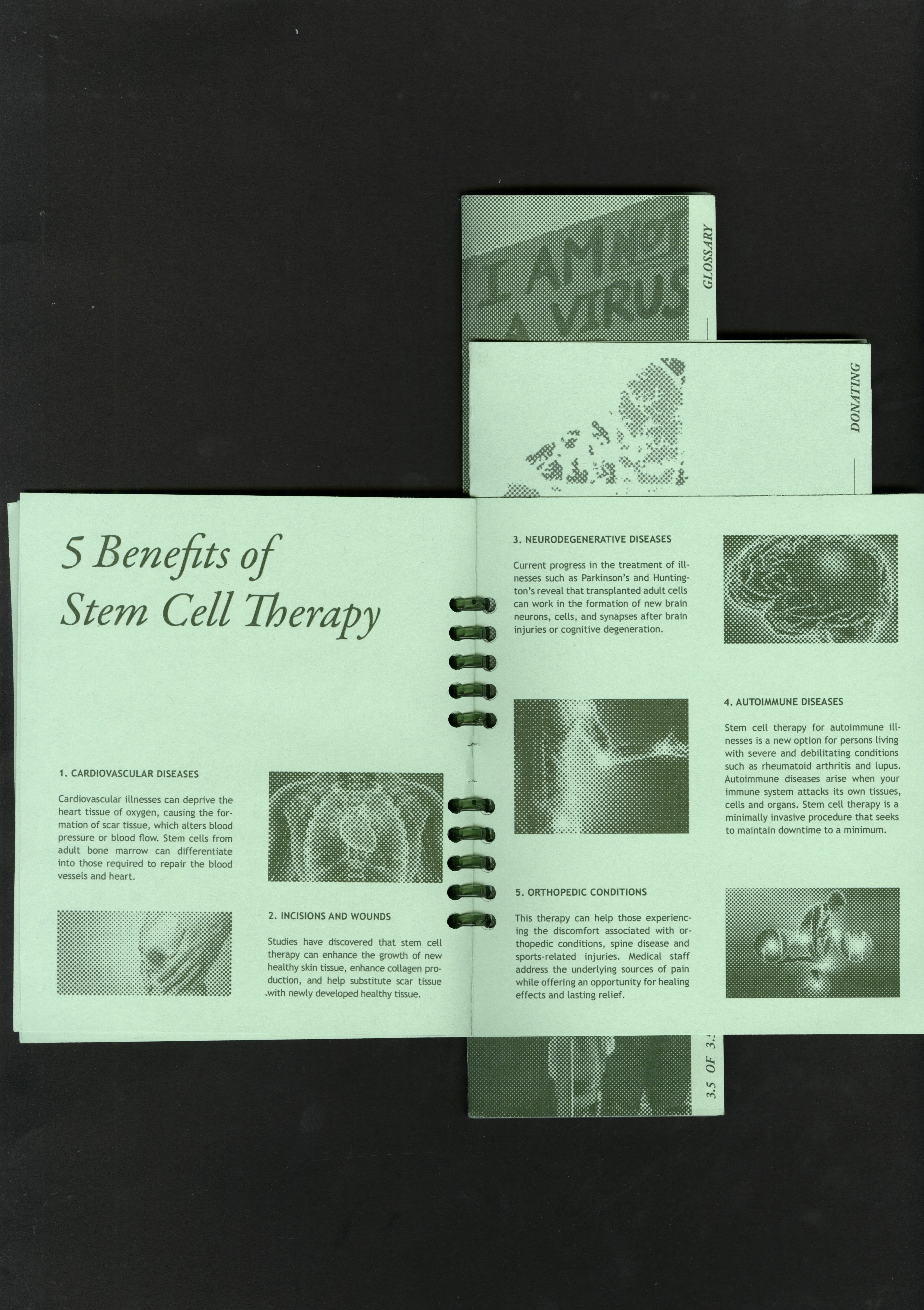
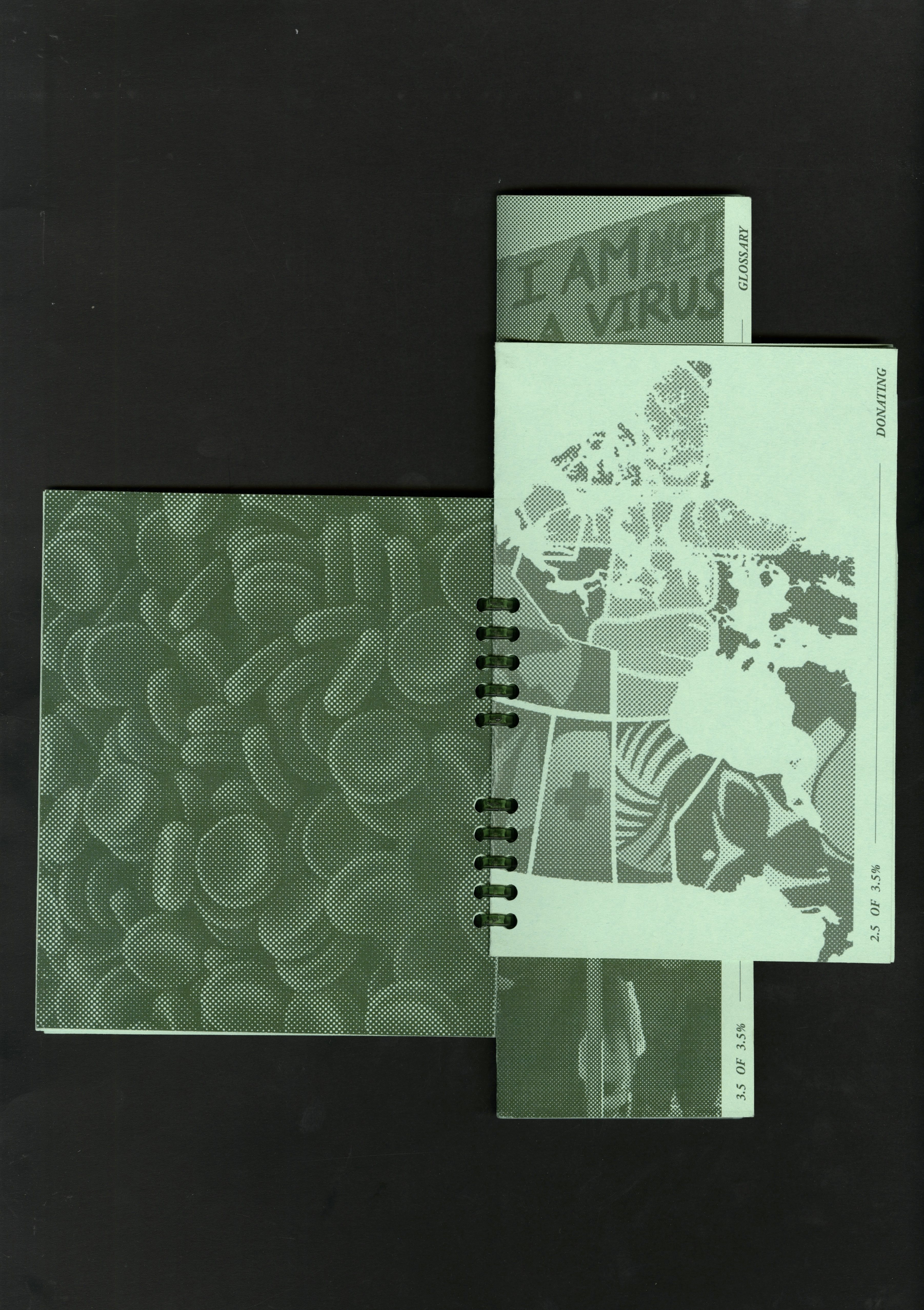

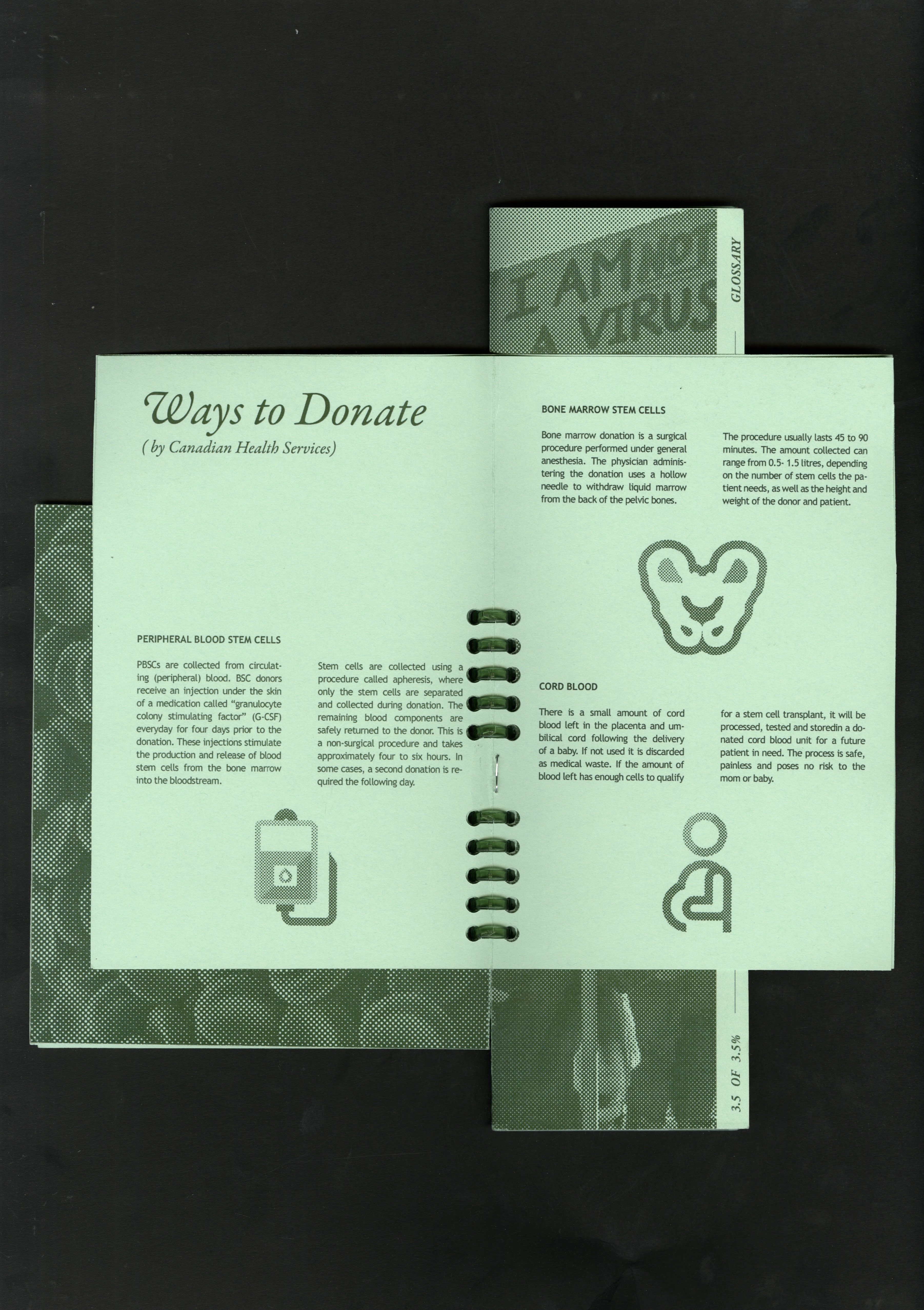
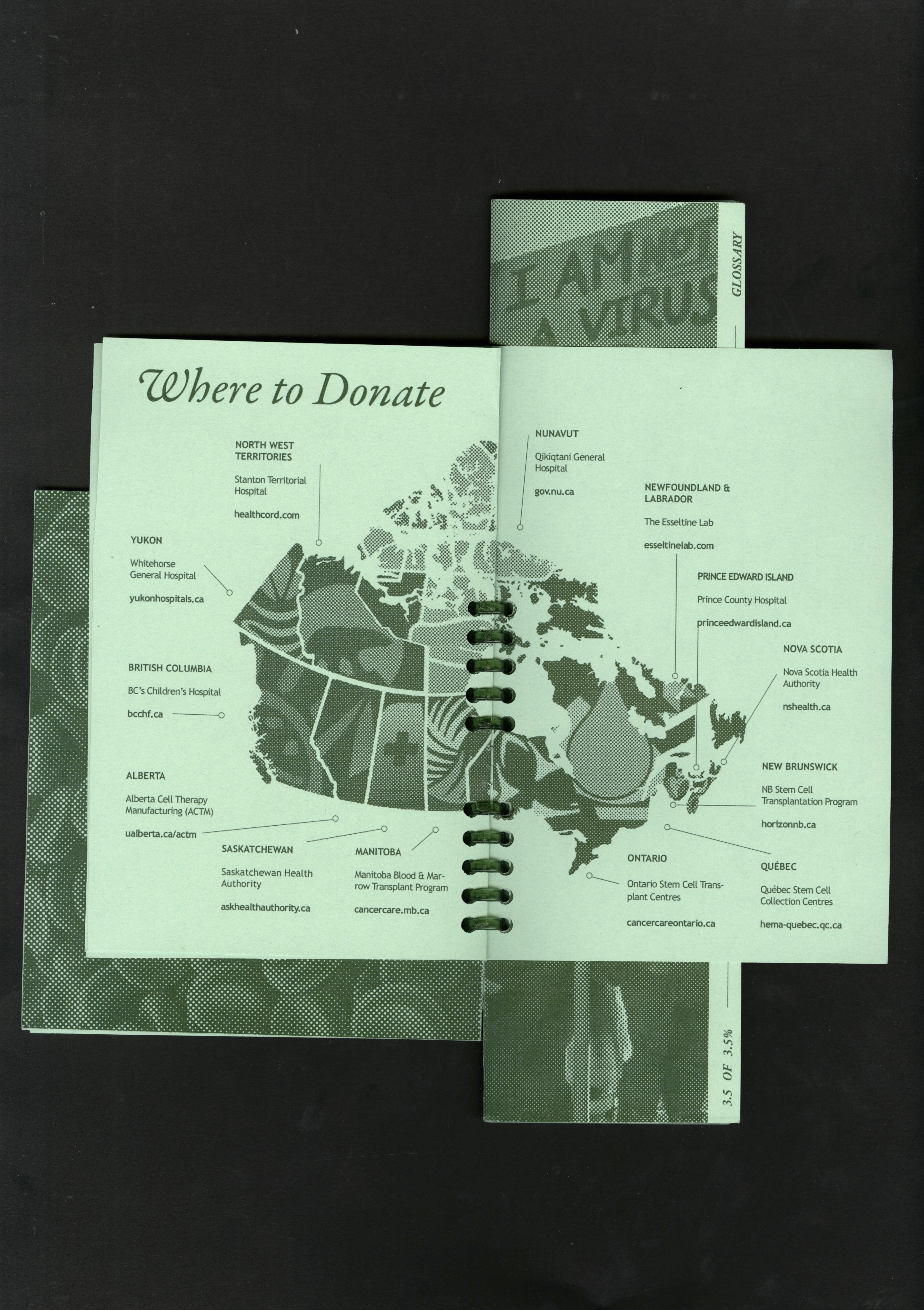
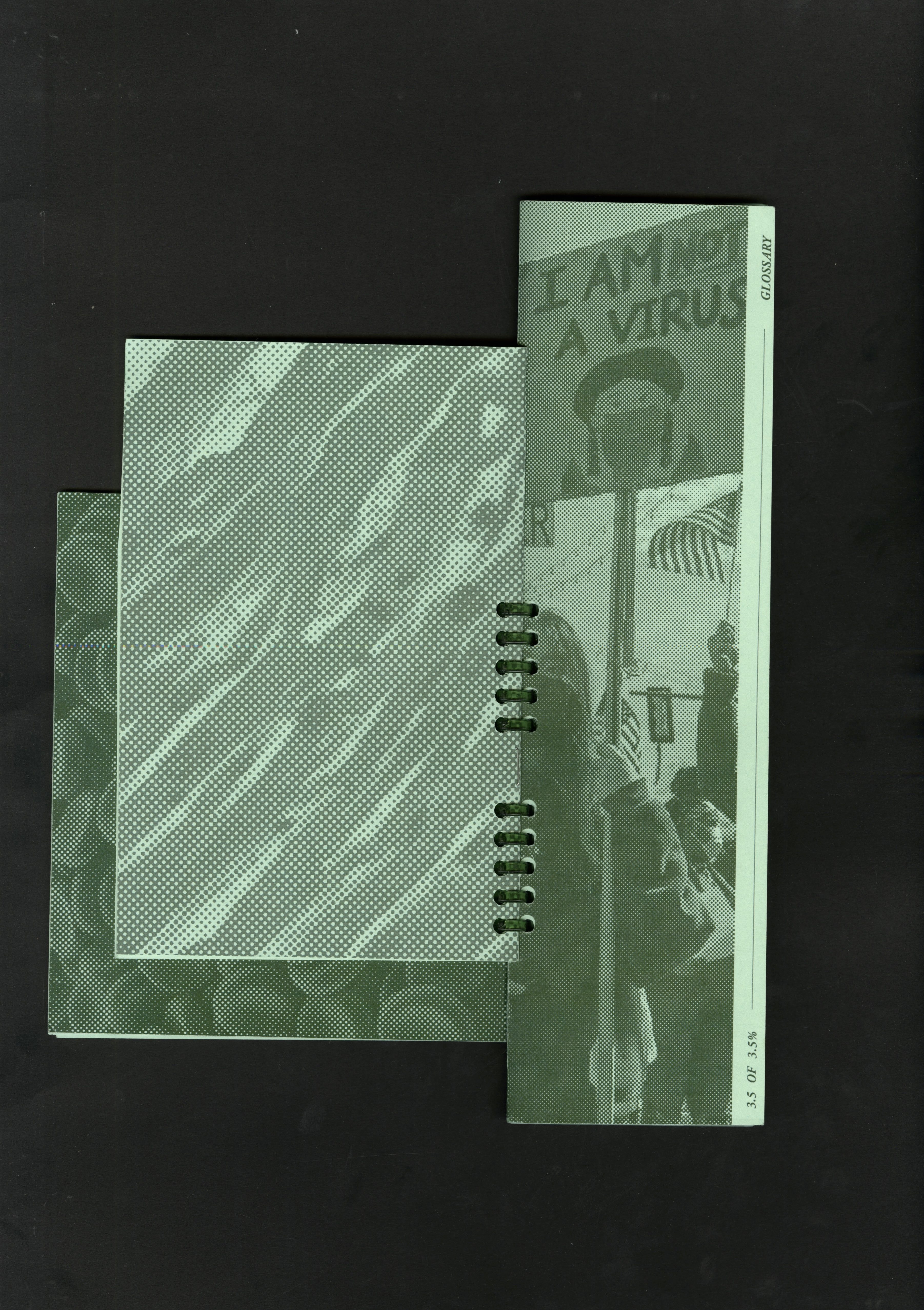

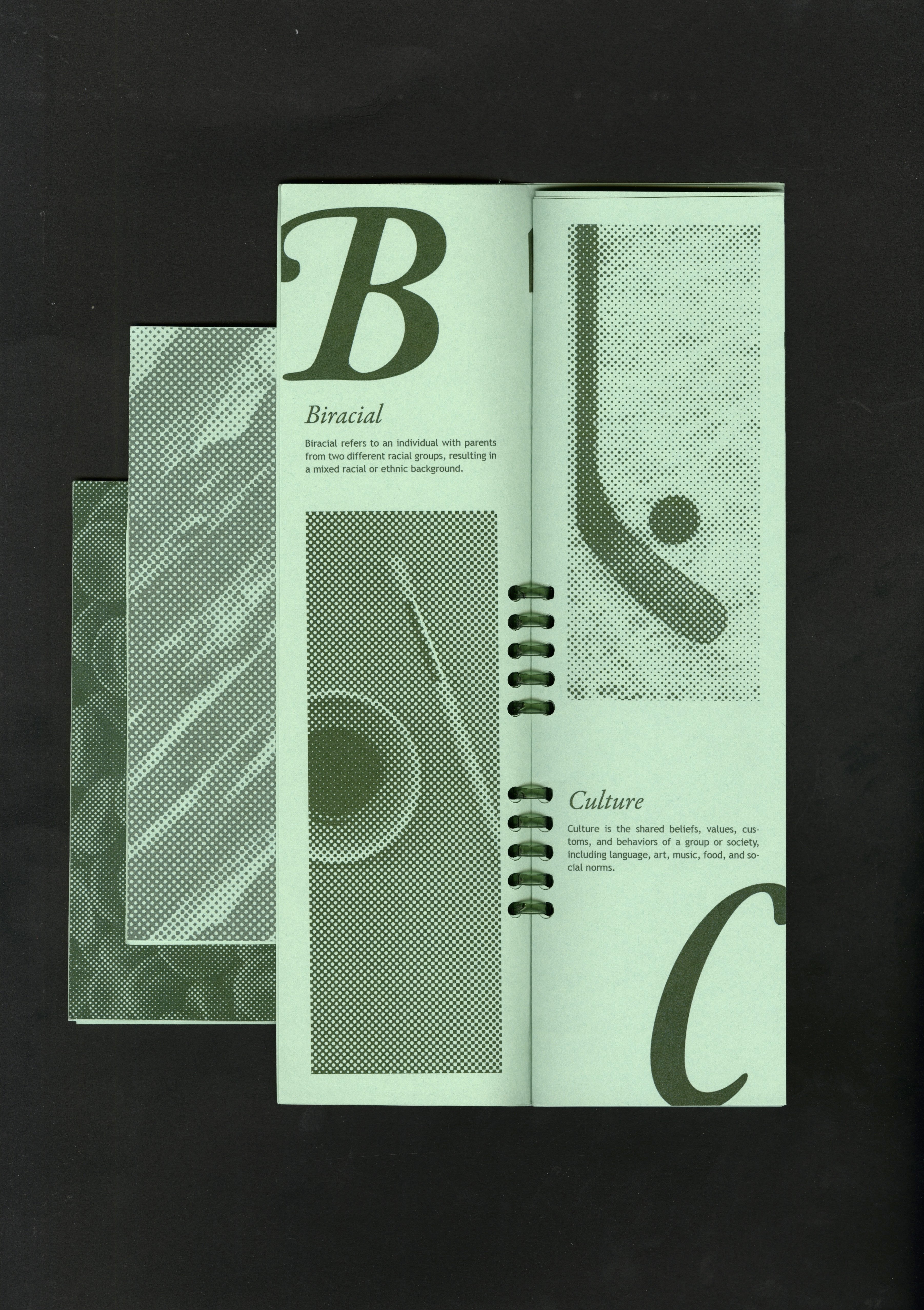

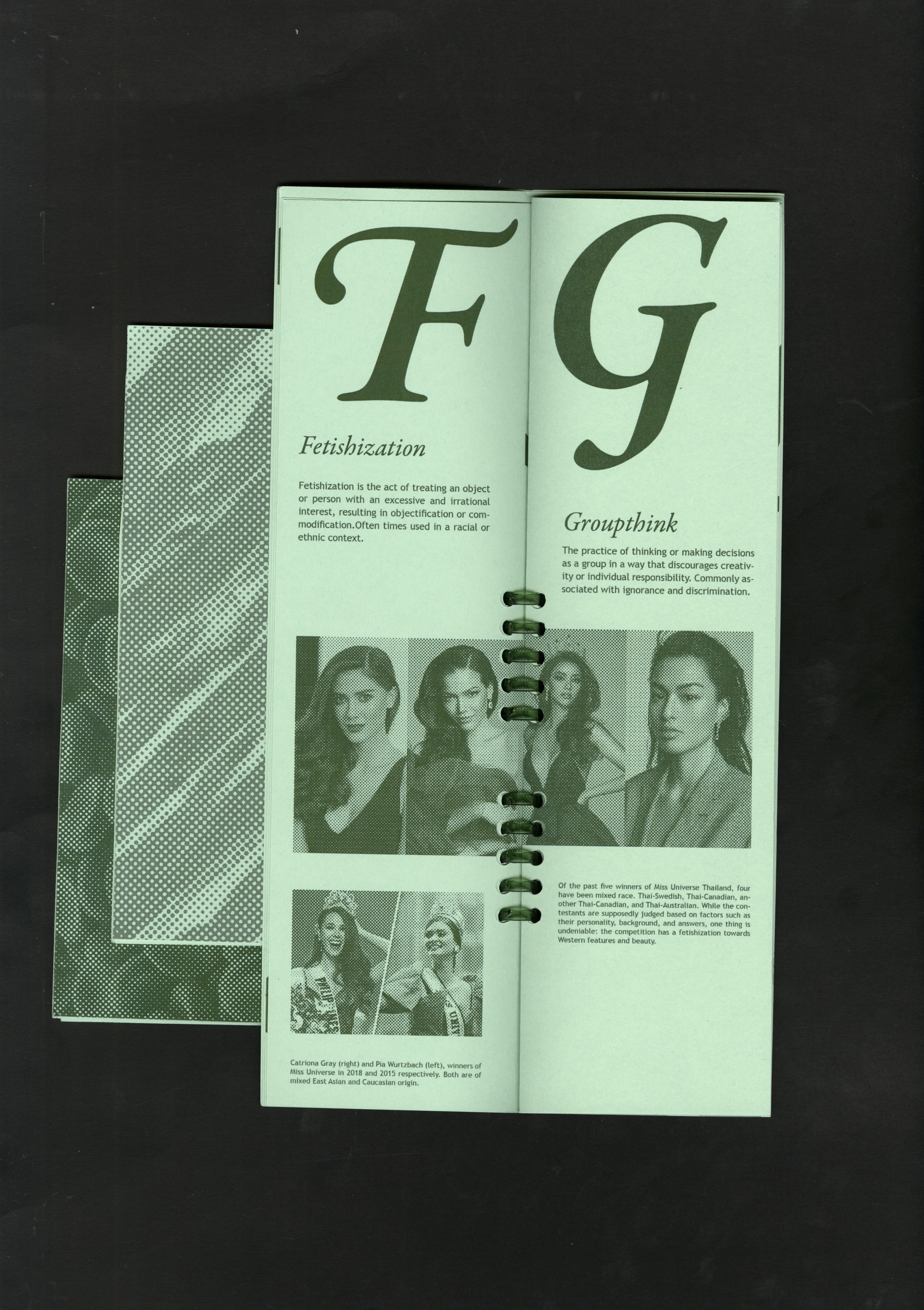
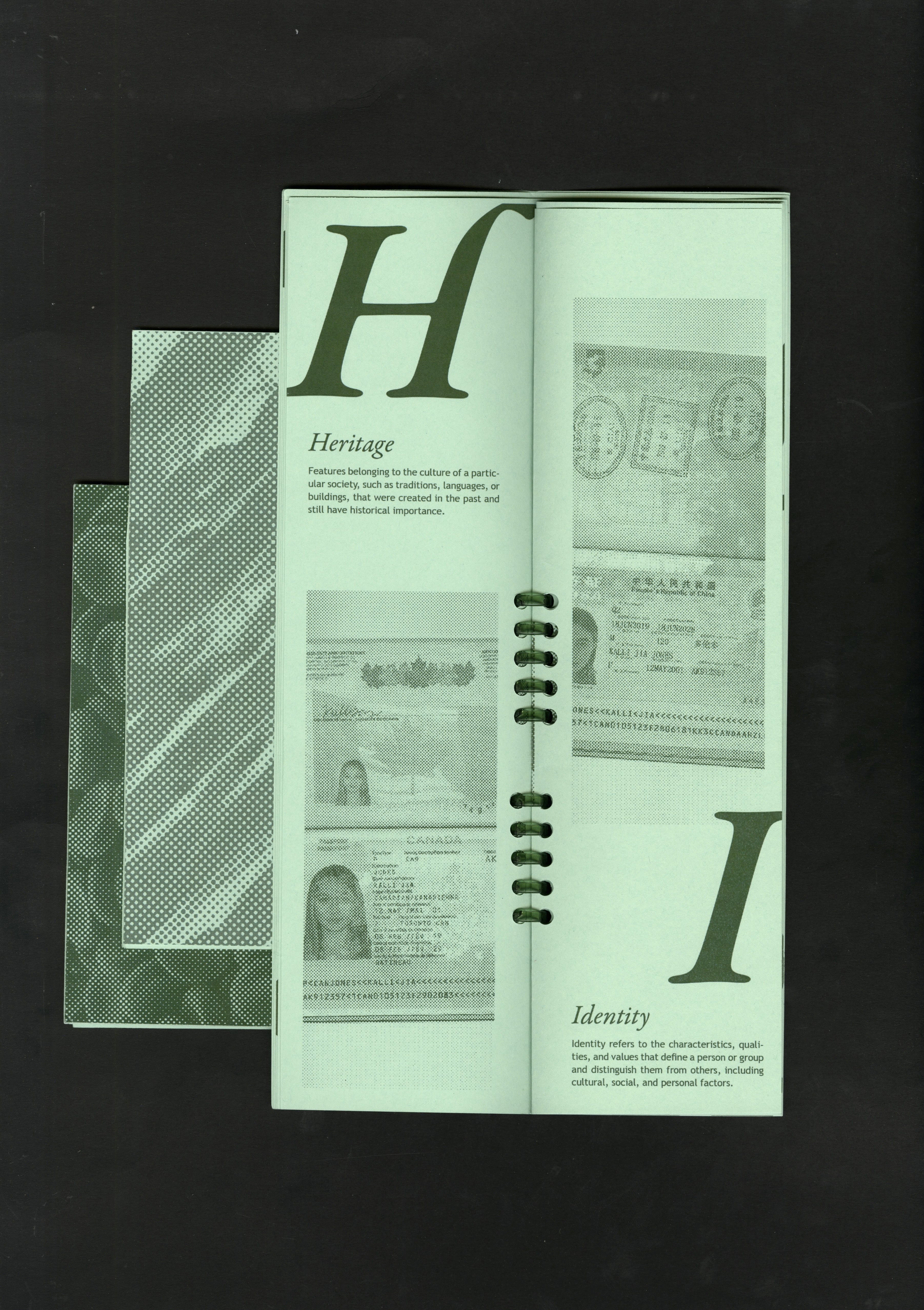


















































Stem cell transplants are life-saving to those with blood cancers such as leukaemia, bone marrow deficiencies, severe anaemia, and autoimmune disorders. In Canada, only 3.5 per cent of registered donors are of mixed ethnicity and the vast majority of donors, about two thirds, are Caucasian, according to Canadian Blood Services. The scarcity of multicultural stem cell donors is definitely an under-represented topic in the mixed community. This four part booklet series aims to not to only bring attention to those who are at a genetic disadvantage concerning their stem-cell related diseases, but to bring awareness to both physical and mental challenges that multiethnic people regularly face.
Stem cell transplants are life-saving to those with blood cancers such as leukaemia, bone marrow deficiencies, severe anaemia, and autoimmune disorders. In Canada, only 3.5 per cent of registered donors are of mixed ethnicity and the vast majority of donors, about two thirds, are Caucasian, according to Canadian Blood Services. The scarcity of multicultural stem cell donors is definitely an under-represented topic in the mixed community. This four part booklet series aims to not to only bring attention to those who are at a genetic disadvantage concerning their stem-cell related diseases, but to bring awareness to both physical and mental challenges that multiethnic people regularly face.
Stem cell transplants are life-saving to those with blood cancers such as leukaemia, bone marrow deficiencies, severe anaemia, and autoimmune disorders. In Canada, only 3.5 per cent of registered donors are of mixed ethnicity and the vast majority of donors, about two thirds, are Caucasian, according to Canadian Blood Services. The scarcity of multicultural stem cell donors is definitely an under-represented topic in the mixed community. This four part booklet series aims to not to only bring attention to those who are at a genetic disadvantage concerning their stem-cell related diseases, but to bring awareness to both physical and mental challenges that multiethnic people regularly face.
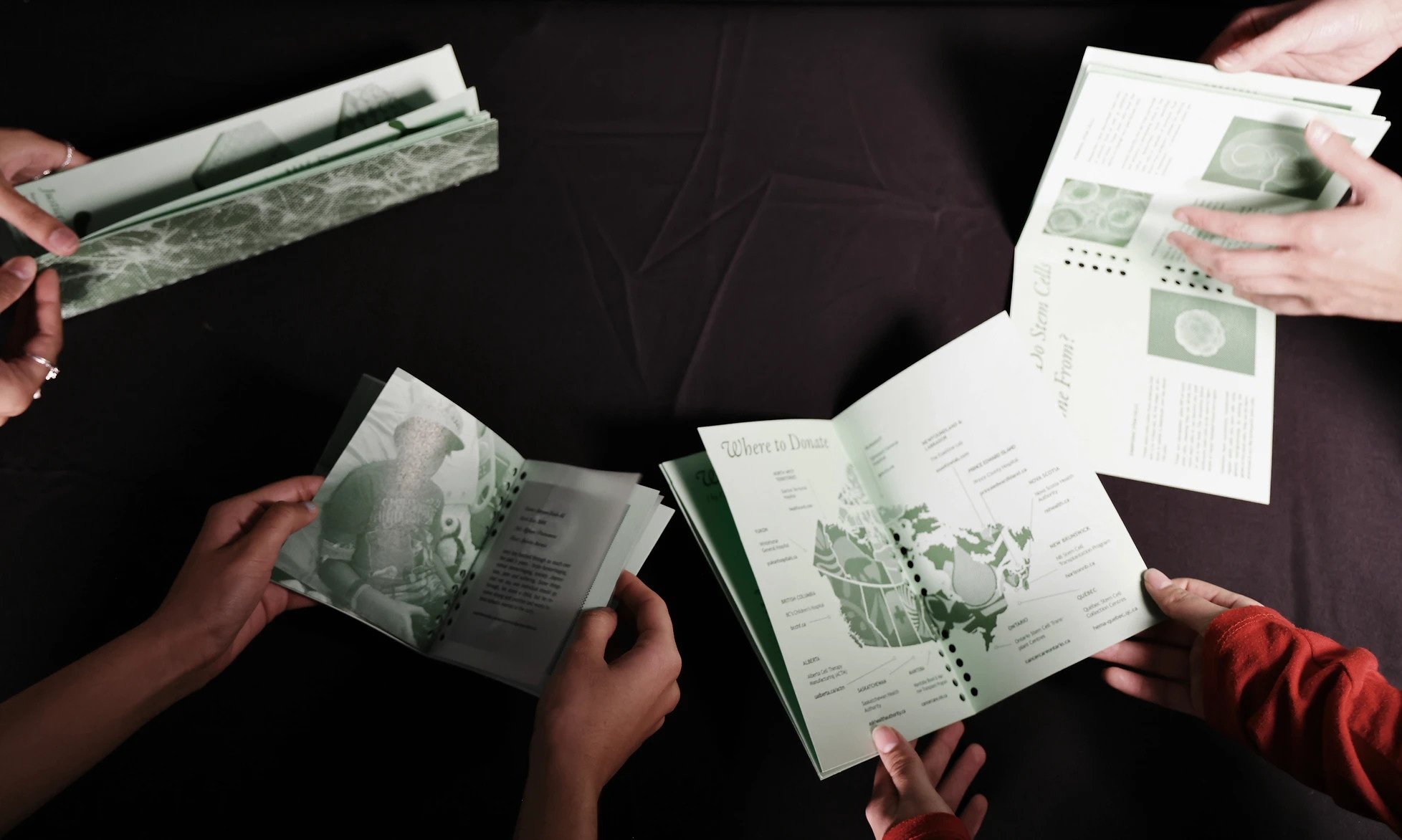
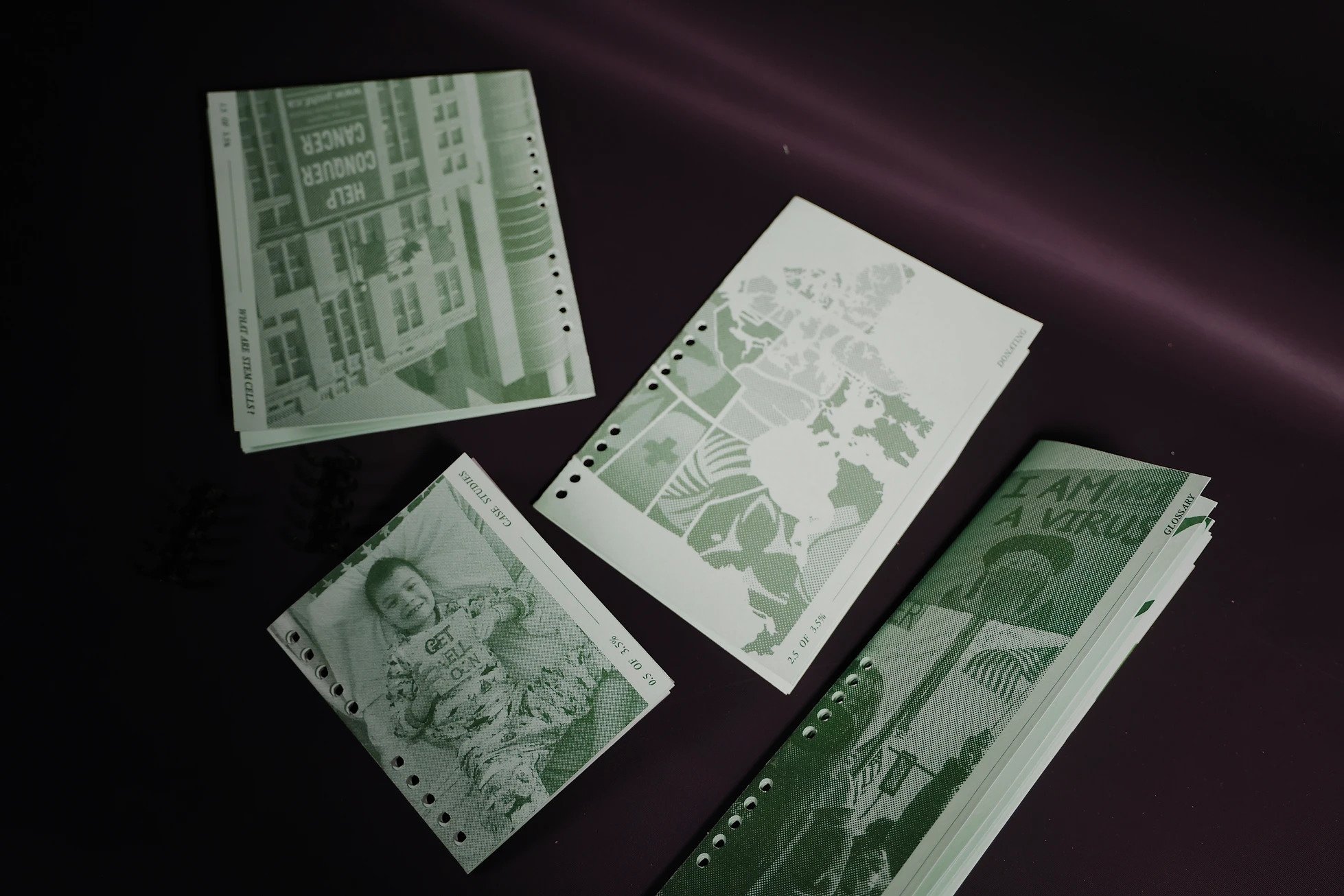
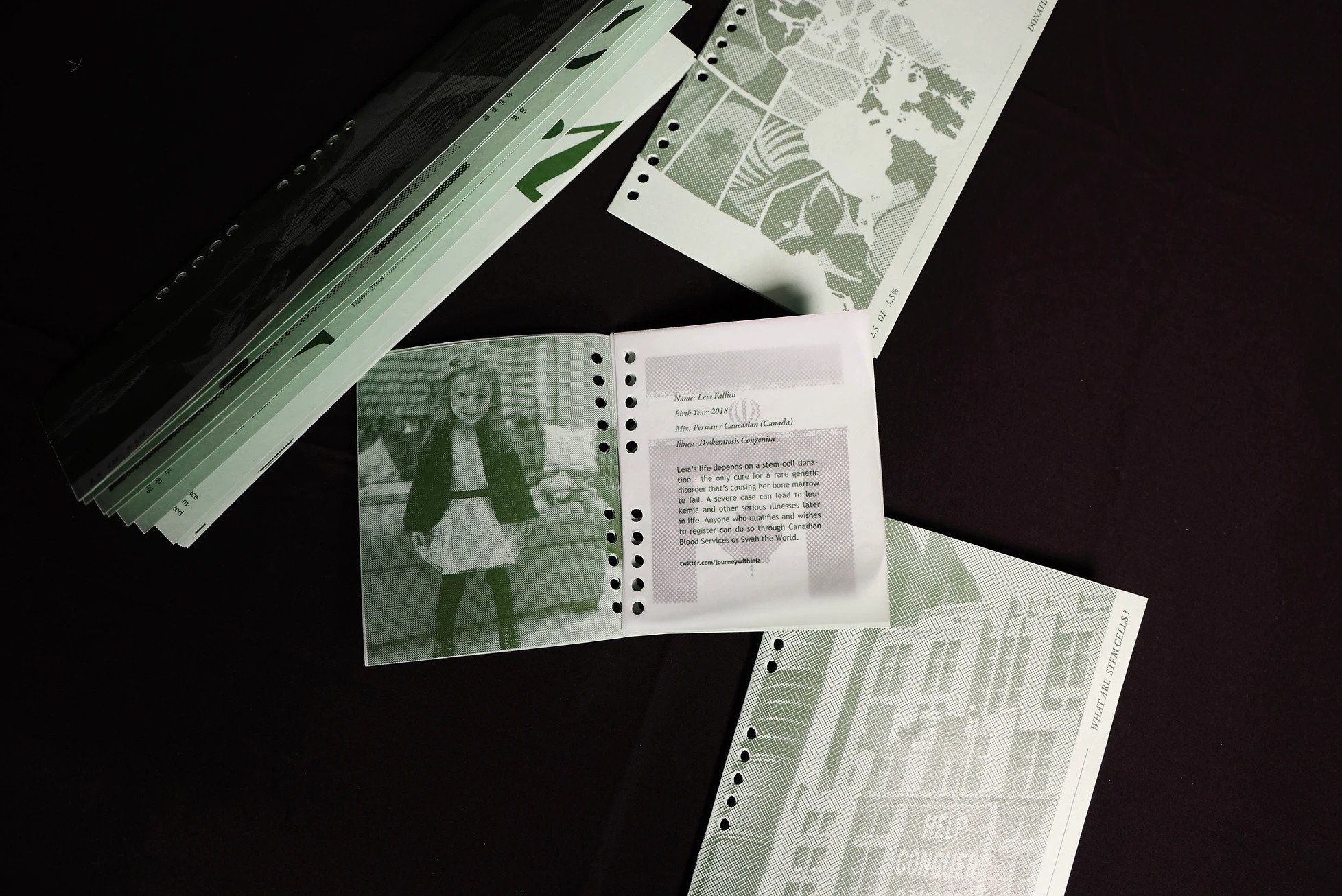






As a nod towards the 3.5% statistic, three of the books share the same surface area while the fourth is halved. The first three booklets serve as a simplified introduction to the relationship between mixed people and stem cell donation, while the last one is a glossary of terms that highlight both challenges and opportunities within the multicultural community.
As a nod towards the 3.5% statistic, three of the books share the same surface area while the fourth is halved. The first three booklets serve as a simplified introduction to the relationship between mixed people and stem cell donation, while the last one is a glossary of terms that highlight both challenges and opportunities within the multicultural community.
As a nod towards the 3.5% statistic, three of the books share the same surface area while the fourth is halved. The first three booklets serve as a simplified introduction to the relationship between mixed people and stem cell donation, while the last one is a glossary of terms that highlight both challenges and opportunities within the multicultural community.